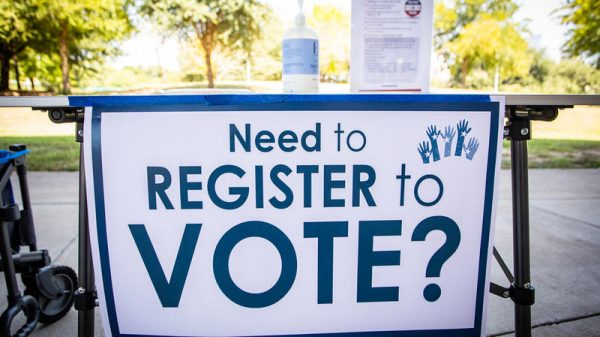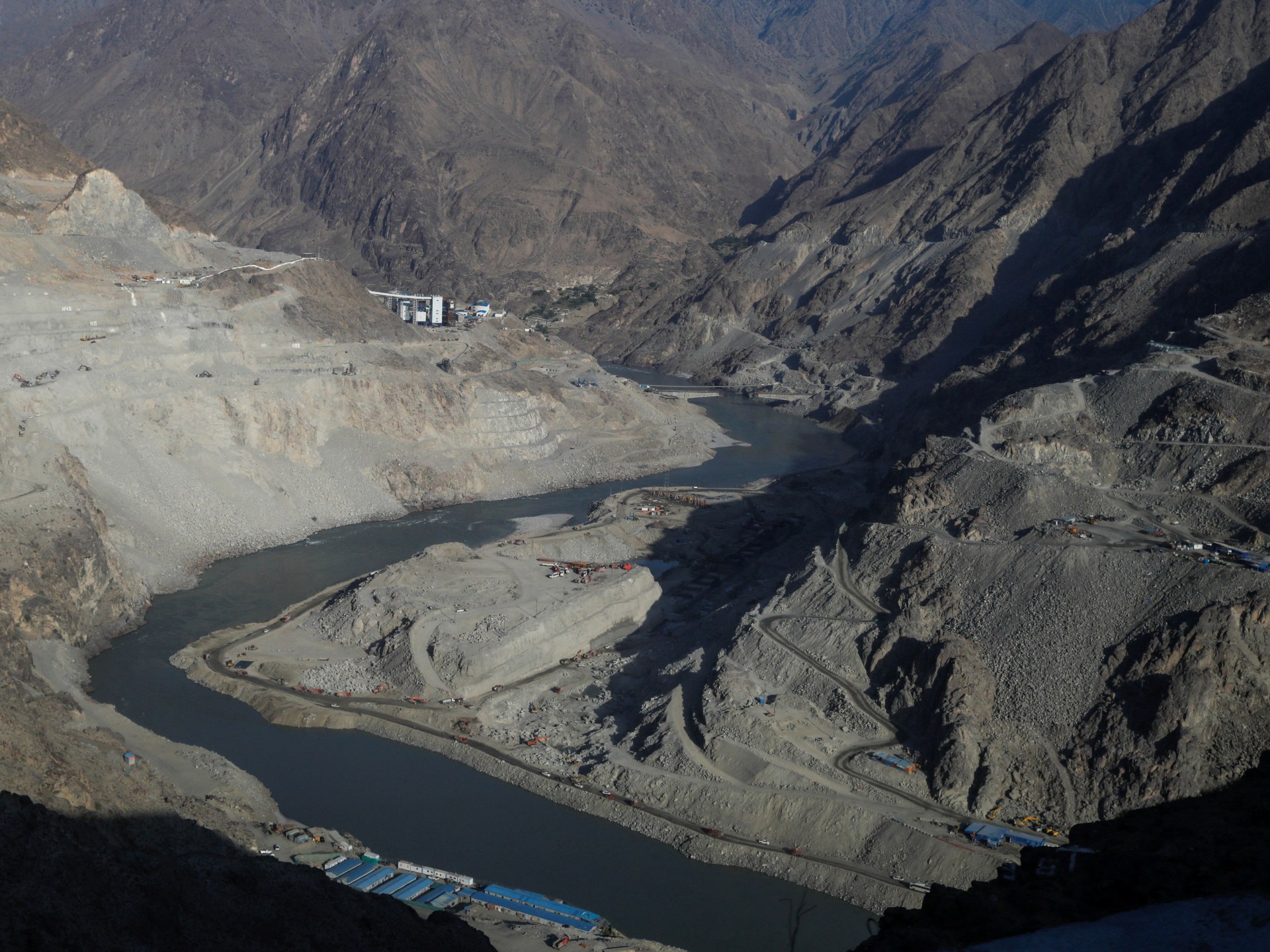Islamabad, Pakistan – For more than 60 years, India and Pakistan have jointly managed the waters of six rivers of the Indus basin that gave birth to one of the oldest human civilisations.
Despite four wars and near-constant tension between them, the South Asian neighbours used the Indus Waters Treaty (IWT) to irrigate the fertile lands on both sides of their border.
But that pact could emerge as the latest flashpoint in the fragile relationship between New Delhi and Islamabad, with India serving a notice to Pakistan seeking to renegotiate the treaty’s terms.
Indian media reports say that on September 18, India sent a formal notice to Pakistan, citing various concerns, including changes in population demographics, environmental challenges, and other factors, asking for a reassessment of the treaty.
“India’s notification highlights fundamental and unforeseen changes in circumstances that require a reassessment of obligations under various Articles of the Treaty,” the Indian notice said.
So what does the notice really mean? Why is the Indus Waters Treaty so important to both countries – and what’s next?
What is the Indus Waters Treaty?
Like many issues between India and Pakistan, the origins of the IWT trace back to the Partition of India in August 1947, when British rule ended, and India and Pakistan emerged as two sovereign nations. Both countries, home to a combined population of over 1.6 billion, are heavily dependent on the waters of the rivers flowing from the Himalayas.
With both nations relying on the same river systems for irrigation and agriculture, an urgent need arose to negotiate an equitable sharing of water resources, particularly to resolve issues of the operation of an integrated irrigation system in Punjab – a province which the British invested heavily in, but through which the new border separating India and Pakistan passed through.
After nine years of discussion, facilitated by the World Bank, then-Indian Prime Minister Jawaharlal Nehru and former Pakistani President Ayub Khan signed the IWT [PDF] in September 1960.
Under the treaty, India controls the three eastern rivers – Ravi, Sutlej, and Beas – while Pakistan controls the three western rivers – Jhelum, Chenab, and Indus. India is obligated to allow the waters of the western rivers to flow into Pakistan with limited exceptions.
The treaty permits India to develop hydroelectric projects on the western rivers under certain conditions. These projects must be “run-of-the-river”, meaning they cannot significantly alter water flow or storage, ensuring Pakistan’s water rights as the downstream riparian are not adversely affected.
What does India want?
In a nutshell, India has said that it wants to renegotiate the terms of the treaty.
According to Anuttama Banerji, a political analyst based in New Delhi, India believes the current terms of the treaty go against it.
The Jhelum, Chenab and Indus – rivers Pakistan is entitled to use – have much more water than the Ravi, Sutlej and Beas, which India controls. In effect, Banerji said, India has access to about 20 percent of the total water covered by the treaty, while Pakistan has access to the remaining 80 percent.
That limited access to water from the rivers has grown into a major challenge for India as its population has soared in recent decades – it is now the world’s most populous nation.
“India feels that the treaty does not take into account newer threats and concerns such as population stress and climate change and its after-effects within the precincts of the treaty,” Banerji, a former fellow at the Washington, DC-based Stimson Center, said.
While India hasn’t clarified what specific changes it wants to be made to the treaty, many analysts believe New Delhi will seek terms that make it easier than now to develop hydropower and other infrastructure on the western rivers whose water Pakistan is entitled to use.
Meanwhile, Pakistan has held its own concerns over the implementation of the treaty in recent years.
What does Pakistan want from the treaty?
Despite ongoing tensions between India and Pakistan, the IWT largely remained uncontroversial until the late 1990s when India announced plans to build the Baglihar Hydropower Project in Indian-administered Kashmir, on the Chenab.
More recently, India has also built the Kishanganga hydroelectric plant on the Jhelum river.
“Pakistan’s argument is that the way India is designing these dams violates its absolute obligation to let the waters flow,” Ahmed Rafay Alam, a Lahore-based environmental lawyer, said.
India, on the other hand, insists that its projects comply with the treaty’s stipulations. “India argues that if it intended to block water flow, it would have to flood its own territory, which is impractical,” Alam added.
Officially, though, Pakistan has not sought any changes to the treaty itself.
A spokesperson for Pakistan’s Ministry for Foreign Affairs, Mumtaz Zahra Baloch, on Thursday said that the treaty was the “gold standard” of bilateral treaties and added that Pakistan remains “fully committed” to its implementation.
“Pakistan believes that it is our collective responsibility to maintain ecological balance, protect our environment and avoid measures which may have adverse implications for the environment. The two countries have a mechanism of Indus commissioners, and we believe all issues pertaining to this treaty can be discussed in this mechanism,” Baloch said during her weekly press briefing.
Where does the treaty fit into broader India-Pakistan relations?
It’s an important part of it – and though it’s centred on a technical subject and ultimately relates to a human essential, water, it has not been immune to the region’s geopolitics.
In September 2016, armed fighters attacked an Indian army base in Uri in Indian-administered Kashmir. At least 19 soldiers were killed. India blamed Pakistan for the attack. Islamabad denied any role.
But in the aftermath of the attack, Indian officials said Prime Minister Narendra Modi had indicated that New Delhi might weaponise India’s position as the upper riparian state within the Indus Valley to punish Pakistan through restrictions on water. “Blood and water cannot flow together,” Modi told them, the officials told multiple Indian journalists.
According to Erum Sattar, a lecturer in the sustainable water management programme at Tufts University, “Any attempt to view water sharing as purely a technocratic matter divorced from political, geopolitical, and financial realities is simplistic and myopic.”
“The IWT is contentious because of the geography and territorial control exercised by both countries. The rivers flow downstream, and Pakistan, being the lower riparian, is heavily dependent on historical water flows,” Sattar told Al Jazeera.
Banerji, the New Delhi-based analyst, said that while the treaty itself isn’t controversial, its technical nature means there is little general public understanding of its provisions. That in turn allows political stakeholders to use the treaty as bait to escalate tensions within India and Pakistan.
“For instance, we are only aware that India has asked for a modification or revision of the treaty, but the details are not available in the public domain,” she told Al Jazeera.
What are the arguments presented by the two countries?
According to Sattar, Pakistan’s position is that it has a historic right to the western rivers, as laid out in the treaty. Pakistan has relied on these rivers to maintain its vast agricultural infrastructure since the colonial era.
However, she says that India’s position has gradually shifted over recent decades, as it has sought to build more infrastructure to control more of the waters of the western rivers, primarily assigned to flow into Pakistan.
“India now increasingly makes the argument, as it seems to have done in the latest notice issued to Pakistan, that changing environmental realities, shifting demographics and the overall need for economic development and a reliable and ‘greener’ power supply to meet those economic development needs means that India would like to reopen the treaty to negotiate presumably better terms for itself,” she said.
Alam, the lawyer, says that this treaty is the only transboundary water treaty on earth which “divides waters and does not share them”.
“All other treaties talk about how waters passing through numerous countries are ‘shared’ among and how waters are to be respected. But this remains the only one where water is ‘divided’ instead,” he added.
In January 2023, India accused Pakistan of “intransigence” regarding the treaty’s implementation, after Islamabad raised repeated objections to hydroelectric projects being built by India on the western rivers and took the matter to The Hague-based Permanent Court of Arbitration (PCA).
India has rejected the PCA’s jurisdiction over the dispute, arguing that Pakistan had failed to first exhaust other dispute resolution mechanisms in the Indus Water Treaty.
What is the dispute resolution mechanism under the treaty?
Under the IWT, the countries have established a Permanent Indus Commission, with a commissioner from each side.
Minor disputes are addressed through the commission, but unresolved issues can be referred to a neutral expert appointed by the World Bank, which facilitates the treaty’s dispute resolution mechanism.
Pakistan had initially sought the appointment of a neutral expert to settle the dispute over Indian projects on western rivers but had then approached the PCA. India, meanwhile, then sought the appointment of a neutral expert.
The World Bank decided, in 2022, to both appoint a neutral expert and allow proceedings at the PCA. India only participates in the neutral expert’s mediations.
Has the treaty served its purpose?
According to Sattar, the IWT has largely been a success. However, when territorial control issues – especially concerning Kashmir – are factored in, the situation becomes more complicated.
The Kashmir valley, a beautiful yet disputed region, has been the cause of multiple wars between India and Pakistan since 1947. Both nations claim the region in its entirety, though each administers parts of it.
“The IWT was designed to keep the Kashmir conflict from escalating into a larger confrontation while ensuring water issues were managed to some extent,” Sattar said.
Alam too said that he believes that the treaty has largely served its purpose over the past six decades.
What is the future of the treaty?
Since India’s decision in August 2019 to revoke Indian-administered Kashmir’s autonomy, relations between the two countries have deteriorated further.
Sattar believes that the best way to move forward with the treaty is to return to the “spirit” in which it was originally negotiated.
Yet, as India’s global influence continues to rise, Pakistan will likely pursue its water-related claims through international law, while India will leverage its geopolitical importance to assert its position, the academic said.




![Tyson Foods Plant [Photo: Food Manufacturing]](https://southarkansassun.com/wp-content/uploads/2023/08/iStock_1185520857__1_.5e441daa51cca-600x337.jpg)








![Silverado Senior Living Management Inc. [Photo: Los Angeles Times]](https://southarkansassun.com/wp-content/uploads/2023/10/download-6-4-600x337.jpg)

![China's Wuhan Institute of Virology [Photo: Nature]](https://southarkansassun.com/wp-content/uploads/2023/09/d41586-021-01529-3_19239608-600x337.jpg)















